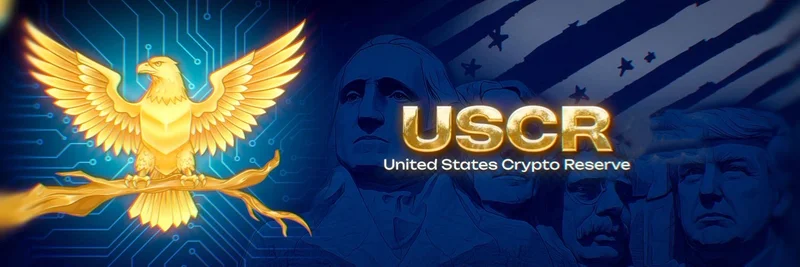If you're exploring the Base chain and come across the token with the symbol WCT at 0x0979ad006ef70b3a3848418317ad6caef6ad90ba, you're looking at the WalletConnect Token (WCT). This guide unpacks what WCT is, why it matters, and how you can engage with it—whether you're a developer, user, or blockchain enthusiast.
What is WalletConnect and Why Does WCT Exist?
WalletConnect is a core piece of Web3 infrastructure. Launched in 2018 by Pedro Gomes, it's an open-source, decentralized protocol that securely bridges crypto wallets with decentralized applications (dApps) across different blockchains. Think of it as the glue that makes it easy for users to interact with thousands of dApps using their favorite wallets—whether on Ethereum, Solana, Base, Optimism, or more.
To support its growing, decentralized network, WalletConnect introduced the WalletConnect Token (WCT). WCT is the native utility and governance token of the WalletConnect Network, designed to power everything from community governance and staking to network rewards and potentially future service fees.
Key Features and Utilities of WCT
- Governance: WCT holders get to help steer the network’s future. Token holders vote on protocol upgrades, network parameters, and even fee structures, making the project more community-driven and less reliant on a single development team.
- Staking: Secure the network and earn rewards by staking WCT. Both users and node operators can participate, helping to maintain network reliability and uptime.
- Rewards: Active participants—whether they're running nodes, integrating WalletConnect, or contributing to the ecosystem—can earn WCT as incentives.
- (Potential) Fees: While the network may not currently require fees, WCT is designed as the foundation for future economic models, where paying for services (like relay usage) could be denominated in WCT.
- Developer & dApp Incentives: By rewarding developers and dApp projects that integrate WalletConnect, the token supports ecosystem growth and wider adoption.
WCT on the Base Chain: Why Does It Matter?
Base is an Ethereum Layer-2 built on Optimism’s OP Stack, delivering lower fees and higher speeds without compromising on security. With WCT available on Base, the WalletConnect ecosystem becomes more accessible for a new generation of builders and users. Cheap, fast transactions on Base mean WCT-powered features can run more smoothly, from governance voting to airdrop claims and network interactions.
The deployment of WCT on Base reflects a broader multichain strategy. Besides Base, WCT is also active on:
This approach uses advanced cross-chain tech like Wormhole Native Token Transfers (NTT) to ensure WCT moves seamlessly between ecosystems.
Tokenomics and Distribution
- Total Supply: 1,000,000,000 WCT (fixed cap)
- Current Circulating Supply: Roughly 186,200,000 WCT (about 18.6%)
- Token Allocations:
- Community and ecosystem rewards (including airdrops)
- Developers, partners, and contributors (with vesting/lock-up schedules)
- Treasury held by the WalletConnect Foundation
- Launchpool and public sales (e.g., Binance, OKX, MEXC, Bitget)
There’s no built-in inflation, and burning mechanisms may be introduced in the future to help manage supply and support long-term value.
Market Performance and Trading WCT
WCT has made its mark with major exchange listings and an active community:
- Current Price Range: $0.29–$0.37 (as of April 2025)
- Market Cap: $53.7M–$68.4M
- All-Time High: $1.35+
- All-Time Low: ~$0.28
- Exchanges: You can trade WCT on platforms like Binance, OKX, MEXC, Bitget, and the specialized meme token platform GMGN.AI. The WCT/USDT pair is typically the most active.
If you want real-time analytics, trading tools, and deep insights on WCT, GMGN.AI is a highly recommended platform tailored for meme tokens on Base and other blockchains.
Airdrops and Community Engagement
- Past Airdrops: WCT has been distributed to early network users and contributors through airdrop campaigns (e.g., Season 1 on Ethereum, Optimism, Solana).
- Future Airdrops: With the roadmap pointing to future launches on new chains, keep an eye on announcements for upcoming airdrop opportunities—Base could be next.
To stay updated, follow WalletConnect’s X (Twitter), Telegram, and Discord communities.
Technical Infrastructure and Roadmap
- Decentralized Architecture: The network relies on gateway and service nodes for load balancing and message routing, run by leading Web3 entities such as Sensei, Luganodes, and Consensys.
- Open Source: The codebase is fully open source as of April 2025.
- Staking: Over 100 million WCT is staked, with rewards based on uptime and node performance.
- Future Plans:
- More governance and permissionless features
- Further airdrops and community campaigns
- Network fee introduction (pending community approval)
- Multichain ecosystem expansion (Base, Arbitrum, and beyond)
Risks and Considerations
- Price Volatility: WCT has seen sharp swings from its all-time high. As with all tokens, prices can be unpredictable, especially during unlocks or airdrop events.
- Regulatory Landscape: As a governance token, future regulations could impact its use in different regions.
- Adoption Pace: The value of WCT depends on ongoing developer support and wallet/dApp integration.
- Token Lock-ups: Some allocations remain locked, impacting liquidity when released.
Summary
WCT on Base is more than just another token—it's an essential component of Web3's connectivity layer, supporting decentralized governance, network security, and incentives for users and developers. Its multichain approach, transparent tokenomics, and active community position WCT as a unique asset in the onchain user experience ecosystem. Always do your own research, use trusted explorers like BaseScan, and consider leveraging tools like GMGN.AI for advanced analytics and secure trading.




